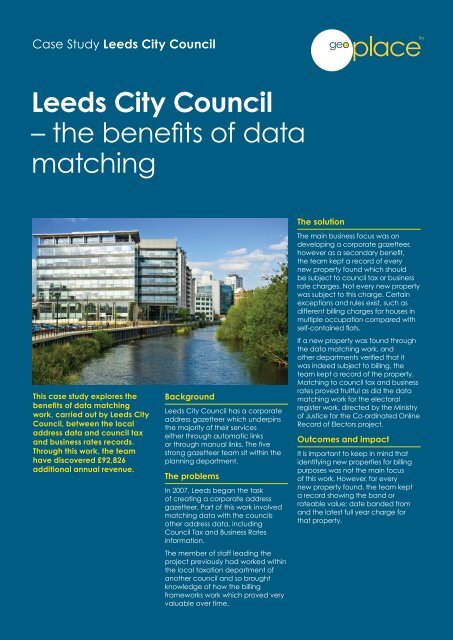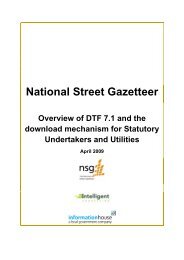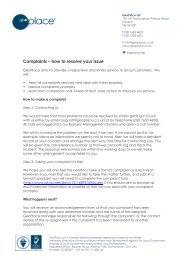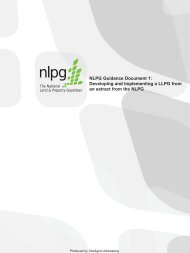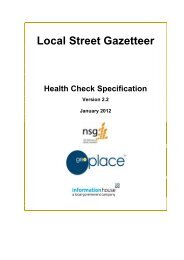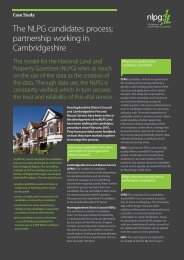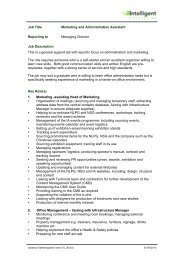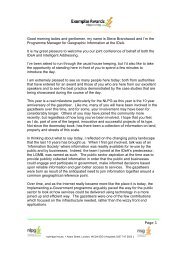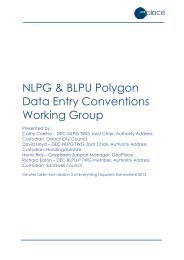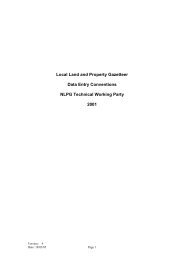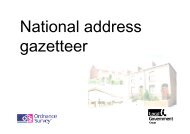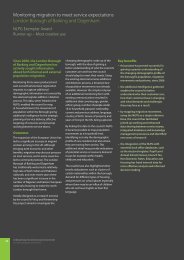Create successful ePaper yourself
Turn your PDF publications into a flip-book with our unique Google optimized e-Paper software.
Case Study <strong>Leeds</strong> <strong>City</strong> <strong>Council</strong><br />
<strong>Leeds</strong> <strong>City</strong> <strong>Council</strong><br />
– the benefits of data<br />
matching<br />
The solution<br />
The main business focus was on<br />
developing a corporate gazetteer,<br />
however as a secondary benefit,<br />
the team kept a record of every<br />
new property found which should<br />
be subject to council tax or business<br />
rate charges. Not every new property<br />
was subject to this charge. Certain<br />
exceptions and rules exist, such as<br />
different billing charges for houses in<br />
multiple occupation compared with<br />
self-contained flats.<br />
This case study explores the<br />
benefits of data matching<br />
work, carried out by <strong>Leeds</strong> <strong>City</strong><br />
<strong>Council</strong>, between the local<br />
address data and council tax<br />
and business rates records.<br />
Through this work, the team<br />
have discovered £92,826<br />
additional annual revenue.<br />
Background<br />
<strong>Leeds</strong> <strong>City</strong> <strong>Council</strong> has a corporate<br />
address gazetteer which underpins<br />
the majority of their services<br />
either through automatic links<br />
or through manual links. The five<br />
strong gazetteer team sit within the<br />
planning department.<br />
The problems<br />
In 2007, <strong>Leeds</strong> began the task<br />
of creating a corporate address<br />
gazetteer. Part of this work involved<br />
matching data with the councils<br />
other address data, including<br />
<strong>Council</strong> Tax and Business Rates<br />
information.<br />
The member of staff leading the<br />
project previously had worked within<br />
the local taxation department of<br />
another council and so brought<br />
knowledge of how the billing<br />
frameworks work which proved very<br />
valuable over time.<br />
If a new property was found through<br />
the data matching work, and<br />
other departments verified that it<br />
was indeed subject to billing, the<br />
team kept a record of the property.<br />
Matching to council tax and business<br />
rates proved fruitful as did the data<br />
matching work for the electoral<br />
register work, directed by the Ministry<br />
of Justice for the Co-ordinated Online<br />
Record of Electors project.<br />
Outcomes and impact<br />
It is important to keep in mind that<br />
identifying new properties for billing<br />
purposes was not the main focus<br />
of this work. However, for every<br />
new property found, the team kept<br />
a record showing the band or<br />
rateable value; date banded from<br />
and the latest full year charge for<br />
that property.
Case Study <strong>Leeds</strong> <strong>City</strong> <strong>Council</strong><br />
Since the matching process<br />
began, the team have located<br />
58 assessments in total (44 council<br />
tax properties and 14 business rate<br />
eligible properties) which equates to<br />
a total annual revenue of £92,826.27.<br />
This includes seven assessments<br />
that were back dated for five years<br />
or more (therefore generating<br />
additional income not included in the<br />
annual revenue figure). The highest<br />
single assessment was for a missing<br />
office building which pays an annual<br />
figure of £11,076.00. This doesn’t<br />
include total revenue generated for<br />
every subsequent year and so purely<br />
captures one years’ revenue.<br />
Next steps<br />
The matching work is still ongoing but<br />
there are potential plans to further<br />
continue this work to carry out a GIS<br />
based exercise to examine properties<br />
which do not have cross references<br />
or do not have a BLPU point linked<br />
to them. This could potentially further<br />
identify properties subject to billing.<br />
Initiatives such as the work discussed<br />
in this case study demonstrate there<br />
can be added benefits from carrying<br />
out tasks such as data matching.<br />
Key lessons from the project<br />
An understanding of key aspects<br />
of council tax and business rates<br />
such as the difference between a<br />
house in multiple occupation and<br />
a self-contained flat; to rules for<br />
billing of special schools etc help<br />
with the approach to this work. It is<br />
important to meet with council tax<br />
and business rates team to help<br />
develop understanding within the<br />
gazetteer team.<br />
For more information<br />
Rachel Antcliffe<br />
Senior LLPG Officer<br />
<strong>Leeds</strong> <strong>City</strong> <strong>Council</strong><br />
rachel.antcliffe@leeds.gov.uk<br />
Zoe Britt<br />
GeoPlace<br />
Zoe.britt@geoplace.co.uk<br />
GeoPlace is a public sector limited<br />
liability partnership between the<br />
Local Government Association and<br />
Ordnance Survey<br />
www.geoplace.co.uk


